The OCZ Vector 180 (240GB, 480GB & 960GB) SSD Review
by Kristian Vättö on March 24, 2015 2:00 PM EST- Posted in
- Storage
- SSDs
- OCZ
- Barefoot 3
- Vector 180
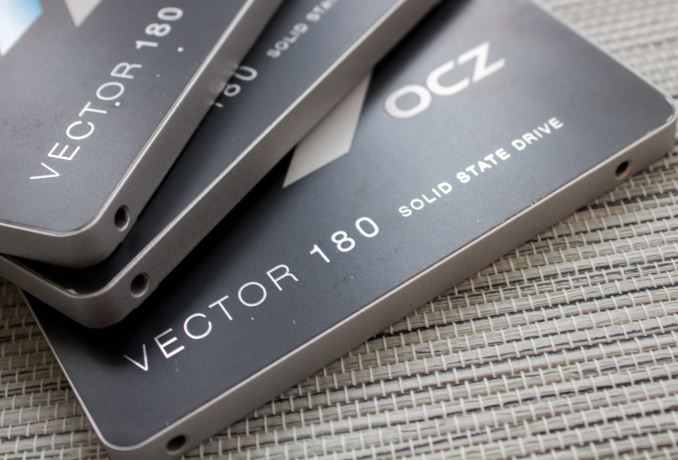
OCZ has been teasing the Vector 180 for quite some time now. The first hint of the drive was unveiled over nine months ago at Computex 2014 where OCZ displayed a Vector SSD with power loss protection, but the concept of 'full power loss protection for the enterprise segment' as it existed back then never made it to the market. Instead, OCZ decided to partially use the concept and apply it to its new flagship client drive that is also known as the Vector 180.
OCZ calls the power loss protection feature in Vector 180 'Power Failure Management Plus', or PFM+ for short. For cost reasons, OCZ didn't go with full power loss protection similar to enterprise SSDs and hence PFM+ is limited to offering protection for data-at-rest. In other words, PFM+ will protect data that has already been written to the NAND, but any and all user data that still sits in the DRAM buffer waiting to be written will be lost in case of a sudden power loss.
The purpose of PFM+ is to protect the mapping table and reduce the risk of bricking due to a sudden power loss. Since the mapping table is stored in the DRAM for faster access, all SSDs without some sort of power loss protection are inherently vulnerable to mapping table corruption in case of a sudden power loss. In its other SSDs OCZ tries to protect the mapping table by frequently flushing the table from DRAM to NAND, but with higher capacities (like the 960GB) there's more metadata involved and thus more data at risk, which is why OCZ is introducing PFM+ to the Vector 180.
That said, while drive bricking due to mapping table corruption has always been a concern, I don't think it has been significant enough to warrant physical power loss protection for all client SSDs. It makes sense for the Vector 180 given it's high-end focus as professional users are less tolerant to downtime and it also grants OCZ some differentiation in the highly competitive client market.
Aside from PFM+, the other new thing OCZ is bringing to the market with the Vector 180 is a 960GB model. The higher capacity is enabled by the use of 128Gbit NAND, whereas in the past OCZ has only used a 64Gbit die in its products. It seems that Toshiba's switch to 128Gbit die has been rather slow as I have not seen too many products with 128Gbit Toshiba NAND - perhaps there have been some yield issues or maybe Toshiba's partners are just more willing to use the 64Gbit die for performance reasons (you always lose some performance with a higher capacity die due to reduced parallelism).
| OCZ Vector 180 Specifications | ||||||
| Capacity | 120GB | 240GB | 480GB | 960GB | ||
| Controller | OCZ Barefoot 3 M00 | |||||
| NAND | Toshiba A19nm MLC | |||||
| NAND Density | 64Gbit per Die | 128Gbit per Die | ||||
| DRAM Cache | 512MB | 1GB | ||||
| Sequential Read | 550MB/s | 550MB/s | 550MB/s | 550MB/s | ||
| Sequential Write | 450MB/s | 530MB/s | 530MB/s | 530MB/s | ||
| 4KB Random Read | 85K IOPS | 95K IOPS | 100K IOPS | 100K IOPS | ||
| 4KB Random Write | 90K IOPS | 90K IOPS | 95K IOPS | 95K IOPS | ||
| Steady-State 4KB Random Write | 12K IOPS | 20K IOPS | 23K IOPS | 20K IOPS | ||
| Idle Power | 0.85W | |||||
| Max Power | 3.7W | |||||
| Encryption | AES-256 | |||||
| Endurance | 50GB/day for 5 years | |||||
| Warranty | Five years | |||||
| MSRP | $90 | $150 | $275 | $500 | ||
The retail package includes a 3.5" desktop adapter and a license for Acronis True Image HD 2013 cloning software. Like some of OCZ's recent SSDs, the Vector 180 includes a 5-year ShieldPlus Warranty.
OCZ has two flavors of the Barefoot 3 controller and obviously the Vector 180 is using the faster M00 bin, which runs at 397MHz (whereas the M10 as used in the ARC 100 and Vertex 460(a) is clocked at 352MHz).
OCZ's other SSDs have already made the switch to Toshiba's latest A19nm MLC and with the Vector 180 the Vector series is the last one to make that jump. Given that the Vector lineup is OCZ's SATA 6Gbps flagship, it makes sense since NAND endurance and performance tend to increase as the process matures.
The Vector 180 review is the second that is based on our new 2015 SSD Suite and I suggest that you read the introduction article (i.e. the Samsung SM951 review) to get the full details. Due to several NDAs and travel, I unfortunately don't have too many drives as comparison points yet, but I'm running tests non-stop to add more drives for more accurate conclusions.
| AnandTech 2015 SSD Test System | |
| CPU | Intel Core i7-4770K running at 3.5GHz (Turbo & EIST enabled, C-states disabled) |
| Motherboard | ASUS Z97 Deluxe (BIOS 2205) |
| Chipset | Intel Z97 |
| Chipset Drivers | Intel 10.0.24+ Intel RST 13.2.4.1000 |
| Memory | Corsair Vengeance DDR3-1866 2x8GB (9-10-9-27 2T) |
| Graphics | Intel HD Graphics 4600 |
| Graphics Drivers | 15.33.8.64.3345 |
| Desktop Resolution | 1920 x 1080 |
| OS | Windows 8.1 x64 |
- Thanks to Intel for the Core i7-4770K CPU
- Thanks to ASUS for the Z97 Deluxe motherboard
- Thanks to Corsair for the Vengeance 16GB DDR3-1866 DRAM kit, RM750 power supply, Hydro H60 CPU cooler and Carbide 330R case


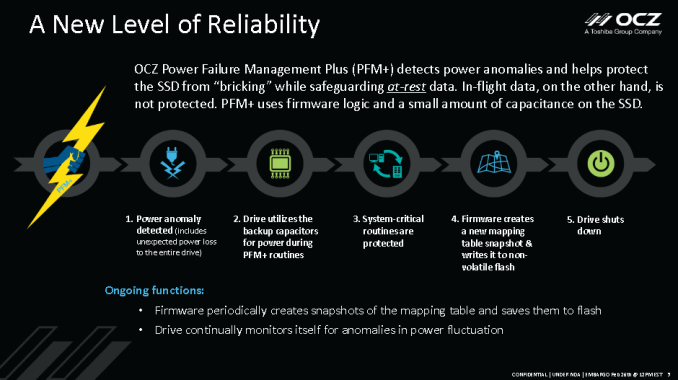
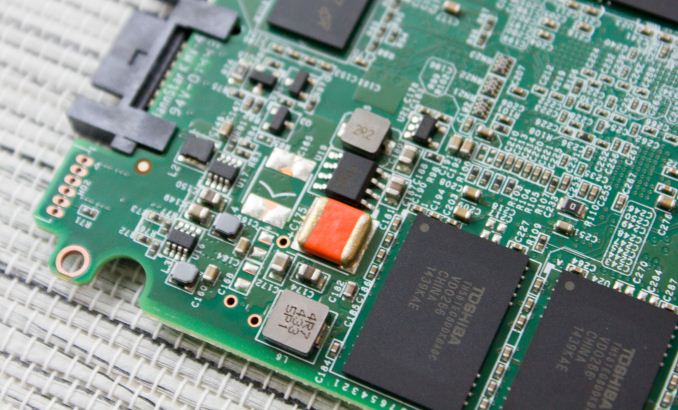
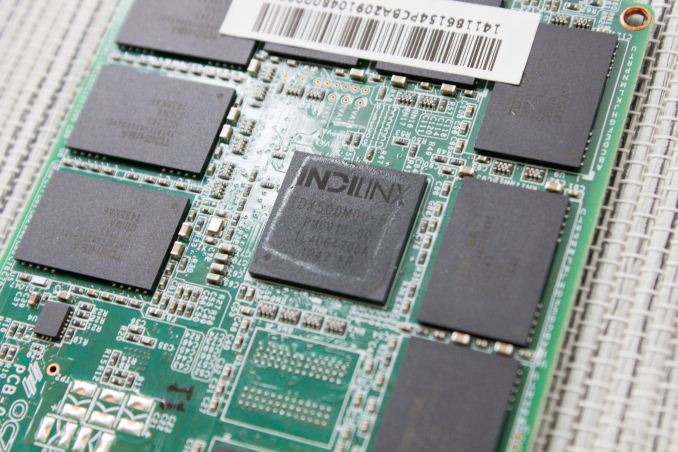
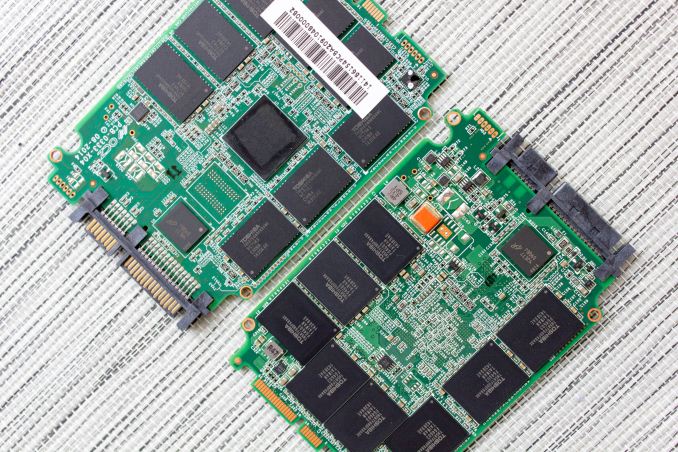








89 Comments
View All Comments
Guspaz - Tuesday, March 24, 2015 - link
Well, one person in particular had difficulty remembering the proper saying while in Tennessee...Minion4Hire - Tuesday, March 24, 2015 - link
He's quoting George Bush.mapesdhs - Wednesday, March 25, 2015 - link
And hence not exactly a viable rationale for concluding anything about anything.Ian.
CaedenV - Tuesday, March 24, 2015 - link
Cant beat the Evo on price, performance, or support... so then what is the point?kmmatney - Tuesday, March 24, 2015 - link
None of the benchmarks include the EVO, so it's hard to tell if it beats it or not. It is probably faster, but the MSRP is the same as the 850 Pro, which definitely beats it in most tests.ocztosh - Tuesday, March 24, 2015 - link
Hi CaedenV, thank you for your feedback. The Vector 180 is designed for the high performance/workstation market and is not positioned versus the TLC based EVO. When it comes to best balance of performance/value our ARC series (based on MLC). We will be coming out with future products that push the value envelope that leverage Toshiba TLC.mapesdhs - Wednesday, March 25, 2015 - link
I was impressed with the Arc 100, it was quicker than I expected. Any data yet on returnrates? It would be interesting to know if it's been competitive with the 850 EVO in that regard.
Samsung has a strong reputation here. My main concern with the Vector 180 though is it will
appear too expensive compared to the 850 Pro and SanDisk Extreme Pro.
Ian.
chrnochime - Tuesday, March 24, 2015 - link
The point is some ppl don't actually want to use TLC.ocztosh - Wednesday, March 25, 2015 - link
Hi chrnochime, thank you for your comments. We so agree there are still a lot of customers that would still prefer MLC. Our current value drive series is MLC based and even after we introduce a TLC based Series we will continue to deliver MLC drives for those customers that are looking for drives higher up the performance spectrum.chrnochime - Tuesday, March 24, 2015 - link
Support? So how long did that TLC fix take to be available again?